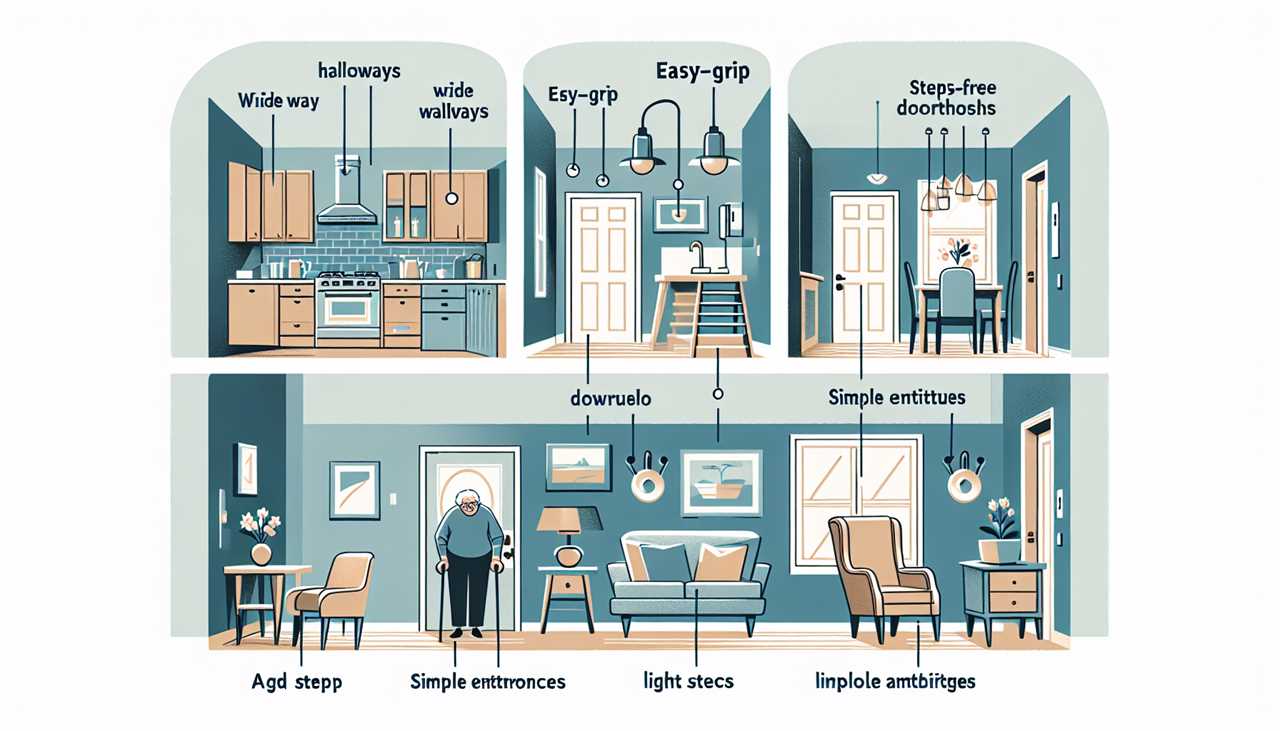Health
Transform Your Home: Arthritis-Friendly Design for Ease and Comfort
Arthritis affects millions, making daily tasks difficult and home safety a concern. Home modifications can significantly improve quality of life for those with

Creating an Arthritis-Safe Haven: Home Modifications for Enhanced Living
We understand that living with arthritis can present unique challenges in daily life, especially within the comfort of your own home. That’s why we’re here to guide you through the process of transforming your living space into an arthritis-safe haven. By implementing thoughtful design changes and incorporating ergonomic solutions, we can help you create an environment that promotes comfort, mobility, and independence.
The Importance of Arthritis-Safe Home Modifications
Arthritis affects millions of people worldwide, causing joint pain, stiffness, and reduced mobility. These symptoms can make everyday tasks challenging and potentially hazardous. By making joint-friendly modifications to your home, you can significantly improve your quality of life and maintain your independence.
Kitchen Makeover: Cooking with Ease
The kitchen is often the heart of the home, but it can also be a source of frustration for those with arthritis. We recommend starting your home transformation here, focusing on accessibility and ease of use.
Countertop Heights: Consider adjusting your countertop heights to reduce strain on your joints. A lower countertop can make food preparation more comfortable, especially if you prefer to sit while cooking.
Cabinet Handles: Replace traditional knobs with large, D-shaped handles that are easier to grasp. This simple change can make a world of difference when opening and closing cabinets.
Pull-out Shelves: Install pull-out shelves in lower cabinets to eliminate the need for bending and reaching. This modification makes it easier to access items stored at the back of cabinets.
Faucets: Opt for lever-style faucets or touch-activated models. These are much easier to operate than traditional twist knobs, which can be challenging for those with limited hand mobility.
Bathroom Bliss: Safety and Comfort Combined
The bathroom can be one of the most dangerous areas for individuals with arthritis. We suggest focusing on safety features that also enhance comfort and accessibility.
Walk-in Shower: Replace your traditional tub with a walk-in shower featuring a low or no threshold. This eliminates the need to step over a high tub wall, reducing the risk of falls.
Shower Bench: Install a built-in shower bench or a removable seat to allow for seated bathing. This can help conserve energy and reduce strain on joints.
Raised Toilet Seat: A higher toilet seat can make it easier to sit down and stand up. Consider installing grab bars near the toilet for additional support.
Non-slip Flooring: Choose flooring materials with good traction to prevent slips and falls. Textured tiles or slip-resistant vinyl are excellent options.
Bedroom Comfort: Sweet Dreams Await
A good night’s sleep is crucial for managing arthritis symptoms. We can help you create a bedroom that promotes restful sleep and easy movement.
Adjustable Bed: An adjustable bed allows you to find the most comfortable position for sleep and can make it easier to get in and out of bed.
Bedside Organization: Install shelving or a nightstand with easy-to-open drawers near your bed to keep essential items within reach.
Wardrobe Modifications: Lower closet rods and install pull-down hanging rods to make accessing clothes easier. Consider replacing small drawer knobs with larger, easier-to-grasp handles.
Living Room Relaxation: Comfort Meets Style
The living room is where we spend much of our leisure time, so it’s essential to make it as comfortable and accessible as possible.
Seating: Choose chairs and sofas with firm cushions and high seats to make sitting down and standing up easier. Armrests provide additional support when changing positions.
Reclining Chairs: Electric reclining chairs can be a game-changer, allowing you to change positions with the push of a button.
Remote Control Organizer: Keep remote controls and other frequently used items within easy reach using a tabletop organizer or a specially designed remote caddy.
Entryway Enhancements: A Welcoming Start
The entryway sets the tone for your home and should be designed with both safety and convenience in mind.
Ramps: If your home has steps leading to the entrance, consider installing a ramp. This not only improves accessibility but can also make it easier to bring in groceries or other items.
Doorknobs: Replace traditional round doorknobs with lever-style handles that are easier to operate, even with limited hand strength.
Bench or Chair: Place a sturdy bench or chair near the entrance to provide a spot for putting on or removing shoes.
General Home Improvements for Arthritis-Friendly Living
Throughout your home, there are several general improvements that can enhance comfort and mobility.
Lighting: Ensure all areas of your home are well-lit to prevent trips and falls. Consider motion-sensor lights for nighttime navigation.
Flooring: Choose smooth, non-slip flooring materials throughout your home. Avoid thick carpets or uneven surfaces that can be tripping hazards.
Stairlifts: If your home has multiple levels, a stairlift can be a valuable addition, allowing you to move between floors safely and comfortably.
Smart Home Technology: Voice-activated devices and smart home systems can make controlling lights, thermostats, and other home features easier.
The Benefits of Arthritis-Safe Home Modifications
By implementing these arthritis-safe home modifications, you can experience numerous benefits:
1. Increased independence and self-reliance
2. Reduced risk of falls and injuries
3. Improved overall quality of life
4. Enhanced ability to perform daily tasks with greater ease
5. Decreased pain and fatigue associated with everyday activities
6. Potential increase in home value and appeal to a broader market
Working with Professionals for Your Home Transformation
While some of these modifications can be DIY projects, we recommend working with professionals for more complex changes. An occupational therapist can assess your specific needs and recommend personalized solutions. Additionally, a contractor experienced in adaptive home modifications can ensure that all changes meet safety standards and building codes.
Embracing Your New Arthritis-Friendly Home
Transforming your home to be more arthritis-friendly is an investment in your health, safety, and quality of life. By creating an environment that supports your needs, you can maintain your independence and enjoy your home to its fullest. Remember, these changes don’t have to sacrifice style for function – many modern ergonomic designs are both beautiful and practical.
We hope this guide has inspired you to consider how you can make your home more arthritis-safe and comfortable. With the right modifications, your home can become a true haven that supports your well-being and enhances your daily life. Here’s to creating a space that allows you to thrive, regardless of the challenges arthritis may present.

Hey there! I’m William Cooper, your go-to guy for all things travel at iMagazineDaily. I’m 39, living the dream in Oshkosh, WI, and I can’t get enough of exploring every corner of this amazing world. I’ve got this awesome gig where I blog about my travel escapades, and let me tell you, it’s never a dull moment! When I’m not busy typing away or editing some cool content, I’m out there in the city, living it up and tasting every crazy delicious thing I can find. Join me on this wild ride of adventures and stories, right here at iMagazineDaily. Trust me, it’s going to be a blast! 🌍✈️🍴







You must be logged in to post a comment Login